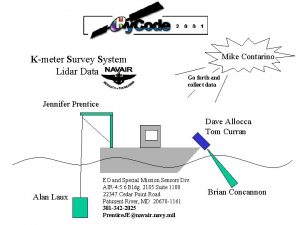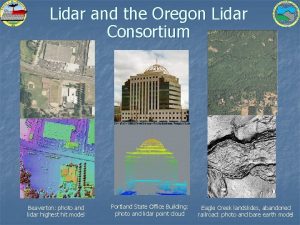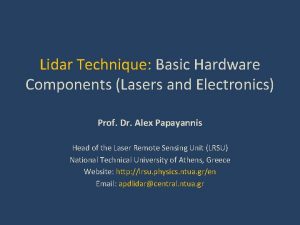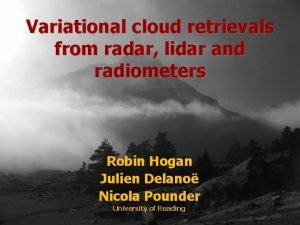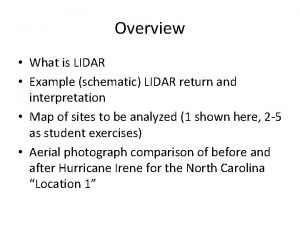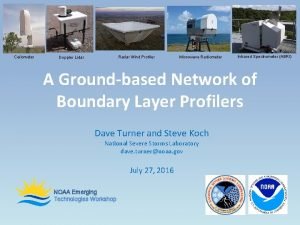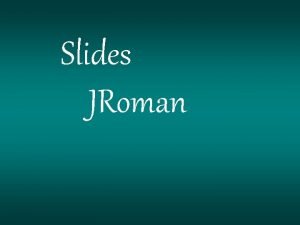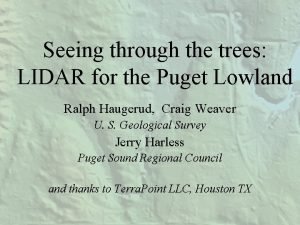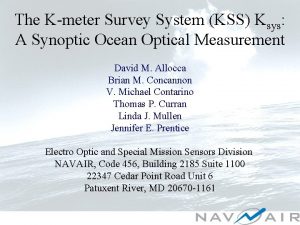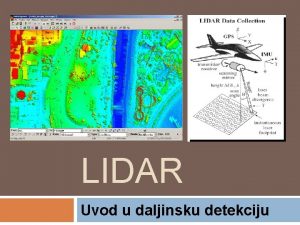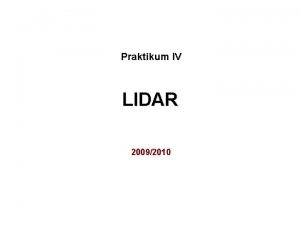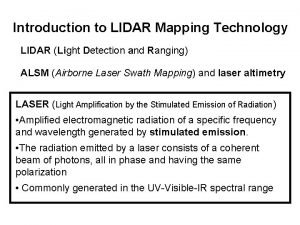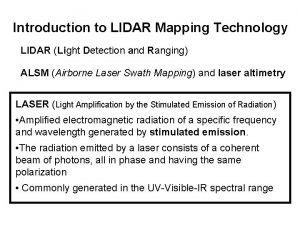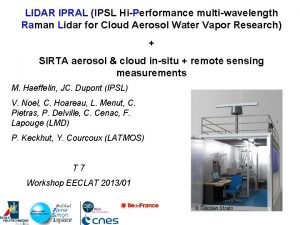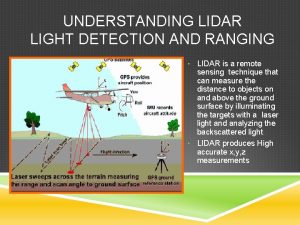Kmeter Survey System Lidar Data Mike Contarino Go












- Slides: 12

K-meter Survey System Lidar Data Mike Contarino Go forth and collect data Jennifer Prentice Dave Allocca Tom Curran Alan Laux EO and Special Mission Sensors Div AIR-4. 5. 6 Bldg. 2185 Suite 1100 22347 Cedar Point Road Patuxent River, MD 20670 -1161 301 -342 -2025 Prentice. JE@navair. navy. mil Brian Concannon

What is ksys? • • • Returned Optical Signal Po, FOV, Div h d System Attenuation Coefficient An apparent optical property Water Clarity a, b, c, b, n Air H 2 O Time = Depth Returned optical power vs. depth is a function of : - system parameters - water IOP’s P(d) = AP 0 e -2 Ksys d 2 (n h + d) Where : A includes system parameter effects, air-water transmission and b(p) Po = transmitted power h = height above surface n = water index of refraction d = water depth

Three Simple Lidar Cases Wide Div Narrow FOV ksys c Loss is due to a and b Wide Div Wide FOV ksys kd Krumboltz Pencil Beam Wide FOV ksys a Loss is due to a

K-Meter Survey System (KSS) CH 2 CH 1 Shipboard KSS Optical Layout Shipboard System Design Specs: Div = 3 o, CH 1 FOV = 10 o, CH 2 FOV = 4 o Dual Independent 4” x 4”, ND of 2. 6 to 4 Output Power: 100 m. J @ 532 nm 8 n. S Pulse Width 100 Mhz Analog Bandwidth 8 bit, 1 GSPS Dual Digitizers PMT Photo Detectors with 10% QE Interference Filters with 4 nm Bandwidth

Lidar Signals for Different Water Types

Comparison of Lidar and In-situ Profile Data Shallow Mixed Layer at Station 10

Hy. CODE 2001 – NAVAIR Station Locations 25, 000 Ksys Waveforms Collected On Station and In Transit July 22 -25 Typical Sample = 40 waveforms Waveforms processed to yield an average Ksys point measurement for a given depth range e. g. (1 -15 m)

KSS Transect Data, Stations 2 to 10 >500 Ksys Samples CH 2 Narrow FOV CH 1 Wide FOV

A Quick Look at Ksys vs. a(532) and c(532) (Pegau, SLOWDROP Profiler)

Dr. E. Zege Analytical Lidar Model - KSS-2

Future Work Science Missions : • Validate the model using in-situ data Solving the forward problem (IOP inputs gives lidar waveform) • Reverse problem Can a unique set of IOP’s be derived from a single lidar measurement ? • Detect, identify and monitor shallow water column structures For example: plankton and particle scattering layers Navy Mission : • Sensor performance predictions (ALMDS = AES 1) Generate global maps of water clarity versus season • Mixed layer detection and mapping

References Krumboltz REFERENCE 1. H. Krumboltz, “Experimental Investigation of System Attenuation Coefficient for HALS”, , Report No NADCS 0035 -30 prepared for Defense Mapping Agency, August 1979. Zege REFERENCES 1. E. P. Zege, A. P. Ivanov, and I. L. Katsev, Image Transfer through a Scattering Medium (Springer- Verlag, Heidelberg, 1991). 349 p. 2. I. L. Katsev, E. P. Zege, A. S. Prikhach, and I. N. Polonsky, “Efficient technique to determine backscattered light power for various atmospheric and oceanic sounding and imaging systems”, JOSA A. , 14, 1338 -1346, (1997). 3. E. P. Zege, I. L. Katsev, and I. N. Polonsky, “Analytical solution to LIDAR return signals from clouds with regard to multiple scattering”, Appl. Phys. , B 60, 345 -353, (1995). 4. E. P. Zege, I. L. Katsev, and I. N. Polonsky, “Effects of Multiple Scattering in Laser Sounding of a Stratified Scattering Medium. 1. General Theory”, Izv. , Atmos. Oceanic Phys. , 34, N 1, 36 -40, (1998).

